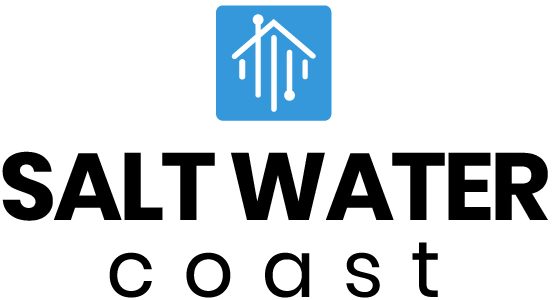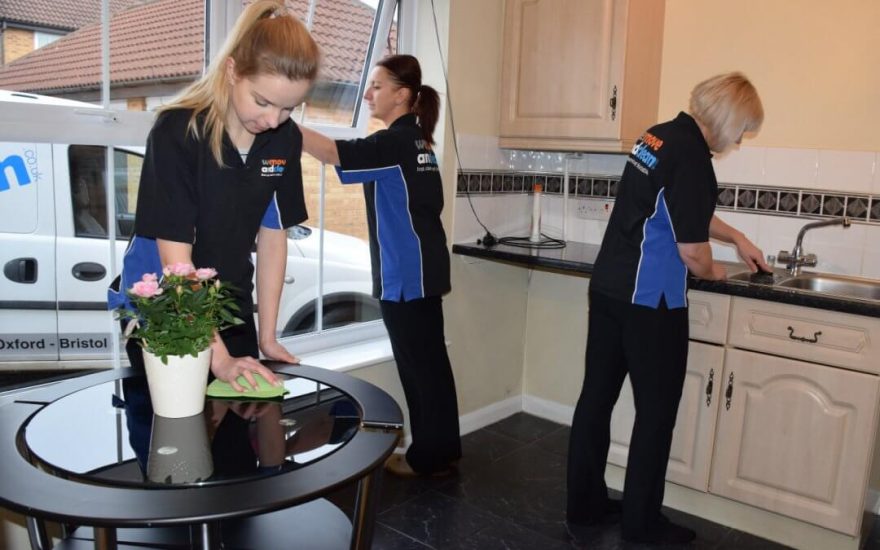When you’re moving out of a rental property, end of tenancy cleaning is the last thing you want to think about (or do). But when it’s the key to getting your bond back, it pays not to leave it to the last minute. Here’s everything you need to know about end of tenancy cleaning to make getting your bond back in full a breeze.
What is end of tenancy cleaning?
End of tenancy cleaning is the process of deep cleaning a rental property after a tenant moves out. It can be done by the tenant, landlord, or property manager although it usually depends on what is specified in your tenancy agreement. In general, leaving the property as clean (or cleaner than) it was when you first moved in is essential if you want to receive your full bond refund.
Why is end of tenancy cleaning important?
If you’re a tenant, end of tenancy cleaning is important because it is commonly a prerequisite for receiving your full bond refund. Leaving the rental property in good, clean condition also encourages your landlord or property manager to provide a positive reference to support your tenancy applications in the future.
The benefit of end of tenancy cleaning for property managers or landlords is knowing that the rental property has been thoroughly cleaned and is ready for the next tenant to move in. When a new tenant moves into an unclean and/or damaged property, it doesn’t exactly set the best first impression of the place they are hoping to call home for the length of their tenancy.
Let’s face it – the last thing anyone wants to be doing when they move into a new property is clean up after the previous tenant. It’s much easier if the new tenant has a clean house so they can start unpacking their belongings straight away. If you’re still wondering why end of tenancy cleaning is important, consider how you
would feel if you moved into a rental where it hadn’t been done.
Does end of tenancy cleaning help me get my bond back?
Yes. Leaving the property reasonably clean and tidy is one of the main conditions required to receive your bond back in full; the property must also be left undamaged, and rent must be up to date. The landlord or property manager will carry out a final property inspection and if any further cleaning is required, the cost may be deducted from your bond refund.
What does an end of tenancy clean include?
There is often a lot of confusion around what an end of tenancy clean includes. Under the legislation, tenants must leave the premises in a reasonably clean and tidy condition. The real Estate Institute of New Zealand (that in 90% of cases, landlords and tenants take a different view of what “reasonably clean and tidy” means.
For example, some landlords will write clauses into a tenancy agreement that require the property and/or the carpets to be professionally cleaned. However, the current legislation does not mean rental properties must be cleaned to a professional standard. The Tenancy Tribunal appears to agree, stating that landlords cannot ask a tenant to do more than the Residential Tenancies Act requires them to do and as such, professional carpet cleaning requirements are likely to be deemed unenforceable.
If you are unsure of what your landlord or property manager expects, here is a checklist of cleaning tasks* usually included in a professional end of tenancy cleaning services.
End of tenancy cleaning checklist
- Spot cleaning walls
- Removing cobwebs
- General dusting
- Wiping and cleaning skirting boards, doors, door frames, and windowsills
- Cleaning wardrobes, cabinets, drawers, and cupboards – inside and out
- Wiping and cleaning door handles and light switches
- Window cleaning – inside and out
- Vacuuming, sweeping, and mopping hard floor surfaces
- Deep cleaning carpets and rugs
- Disinfect and clean all sinks, hand basins, and benches
- Disinfect and clean toilet
- Clean all surfaces and mirrors
- Oven cleaning – inside and out
- Deep clean of rangehood
- Clean household appliances inside and out e.g. dishwasher, fridge, oven/stove
Performed for each room of the house if applicable.
What do landlords look for when completing a property inspection report?
Landlords or property managers are looking to record any damage and assess the condition of the property including walls, doors, lights, power points, floors, windows, blinds/curtains, cupboards, sinks/benches, appliances, bath, shower, toilet, bathroom mirror, rubbish bins, locks, garage, carport, and grounds.
A blank property inspection report can be downloaded from the Tenancy Services website. An initial property inspection report will also have been completed at the start of your tenancy. You may find it helpful to refer to this when completing your end of tenancy cleaning.
In general, the landlord is looking to check that all rooms are clean with no dust, stains or debris, cabinets/draws are clean and empty, and all the walls, ceilings, and floors are clean.
More specifically, the landlord will be looking for:
- Mould/dampness – Are there any signs of water damage, dampness, or mould on the walls, ceilings, and floors? They will also be looking for any peeling paint, cracks, or stains.
- Floors and carpet – The condition and cleanliness of the floors. Are there any stains, marks, or odours? Remember, you do not need to have your carpets professionally cleaned, however, you may need to deep clean the carpet yourself and remove any stains
- Mirrors, furniture, and household appliances – Are the items listed as part of the property’s inventory clean and in the same condition as when the tenants moved in?
- Doors and locks – Do the doors open and close smoothly? Do the locks and any other security systems work?
- Electrical – Do all the light switches, power points, ceiling fans, extractor fans etc, work? Landlords may also expect you to replace any broken lightbulbs or light fixtures.
- Windows and Curtains/Blinds – Are the windows cleaned inside and out? Are the curtains and blinds in good, clean condition? Do the windows open smoothly? Do the blinds/screens function as intended?
- Water fixtures – Are there any problems with the toilet, shower, bath, or sinks that have not been mentioned?
- Grounds – Has all rubbish been removed from the property? Is the outdoor area reasonably clean?
How much does an end of tenancy clean cost?
The cost of an end of tenancy clean will depend on your house size (how many storeys, bedrooms, bathrooms etc) and the current condition and cleanliness of your house. Your location may also play a factor in the cost of the service.
Regardless of your house size, condition, or location, an end of tenancy clean will set you back more than standard house cleaning services – for good reason. An end of tenancy clean is better compared to a deep cleaning service. It may also be called a move out clean or bond cleaning.
You can typically expect to pay around NZ$310 for end of tenancy cleaning for a standard 3 bedroom house with 1 kitchen, 1 bathroom, and 1 living area.
The table below will provide you with a general outline of how much an end of tenancy clean will cost in New Zealand.
End of tenancy cleaning prices
1-bedroom standard house: $60 – $200
2-bedroom standard house: $80 – $300
3-bedroom standard house: $150 – $500
4-bedroom standard house: $250 – $650
Be careful when you are comparing end of tenancy cleaning prices between different professional cleaners.
Check:
The reputation of the cleaning company (check testimonials and Google reviews)
What is included (and not included) for that price
The cost of extras required
Cleaning companies often advertise very low prices, however, upon a closer look these are for 1 bedroom and 1 bathroom only (additional bedrooms and bathrooms will increase the price). Some may also charge extra for options such as oven cleaning, carpet shampoo, and window cleaning.
Carpet cleaning prices
Deep carpet cleaning (such as shampoo clean or steam clean) is considered an additional service (and cost) as some rental properties will not need this service. Also, the cost and time needed for carpet cleaning can vary a lot from house to house because of the amount and condition of the carpet.
Some carpet cleaning services may charge extra for a premium service that can handle tougher stains and be completed fasted and/or have less drying time required.
- 1 or 2 bedrooms standard house: $100 – $210
- 3 bedrooms standard house: $120 – $280
- 4 bedrooms standard house: $180 – $340
You should also consider that the cheapest option (whether for carpet cleaning or end of tenancy cleaning) may also reflect the quality of clean you can expect.
Who pays for the end of tenancy clean?
Generally, tenants do not have to pay for a professional end of tenancy clean unless the property manager or landlord has it as a condition of the tenancy agreement. However, if the tenant has caused hard stains or damage which they can’t remove themselves, they will need to hire a professional cleaner themselves or ask for the cost of the cleaning service to be taken out of the bond.
Can my landlord make me pay for the cleaning?
A landlord or property manager cannot make you pay for professional cleaning unless it is a condition of your tenancy agreement, or you have caused damage or stains which are not removed before the final inspection. As long as you leave the property in reasonably tidy and good condition, your landlord cannot make you pay for cleaning (including carpet cleaning).
DIY Vs Professional End of Tenancy Clean
Unless written in the tenancy agreement, it is up to you whether you carry out the end of tenancy cleaning yourself or hire a cleaning service. However, failure to leave the property reasonably tidy and in good condition is one of the most common reasons that deductions are made from a tenant’s rental bond.
If you are thinking of taking the DIY approach for end of tenancy cleaning, make sure you weigh up the cost of your time vs the cost of paying a professional. While it may be cheaper to DIY your clean, you will likely need to commit a full day of cleaning for a standard 3 bedroom house.

